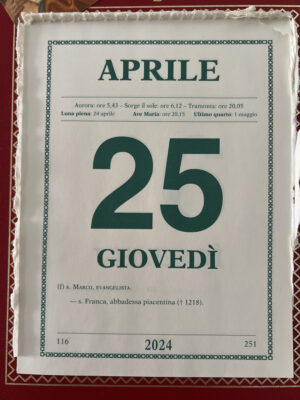 At 06:12 the sun rose over Rome. It will set at 20:05.
At 06:12 the sun rose over Rome. It will set at 20:05.
The Ave Maria Bell will ring – or ought to ring – at 20:15. This cycle lasts until 28th, a few more days.
It is the Feast of St. Mark, Evangelist. It is the week in which we have rogation litanies.
It is 25 April, which is the celebration of the Liberation of Rome by the Americans. Ehem… by the Americans. I hope to enjoy seeing the Italian Airforce flying team, the “Arrows”, arrow over the City trailing the smoky colors of the national flag. They are always good value. The Frecce will be in North America at airshows for the first time in some 30 years. [UPDATE: I didn’t see them.]
Also, today is the 150th birthday of Guglielmo Marconi, the pioneer of radio. In 1901 he succeeded in sending a signal across the Atlantic from Cornwall to Newfoundland. Later he would help to establish the BBC and Vatican Radio in 1931 for Pius XI. So, all you fellow hams out there… raise a glass today to Marconi.
Last night I simply had to park myself in the window and gaze. I even let my supper get cold (more on that, below). At the end of the little video, we zoom in past the bell tower of the Brigidines to the dome of S. Carlo ai Catinari.
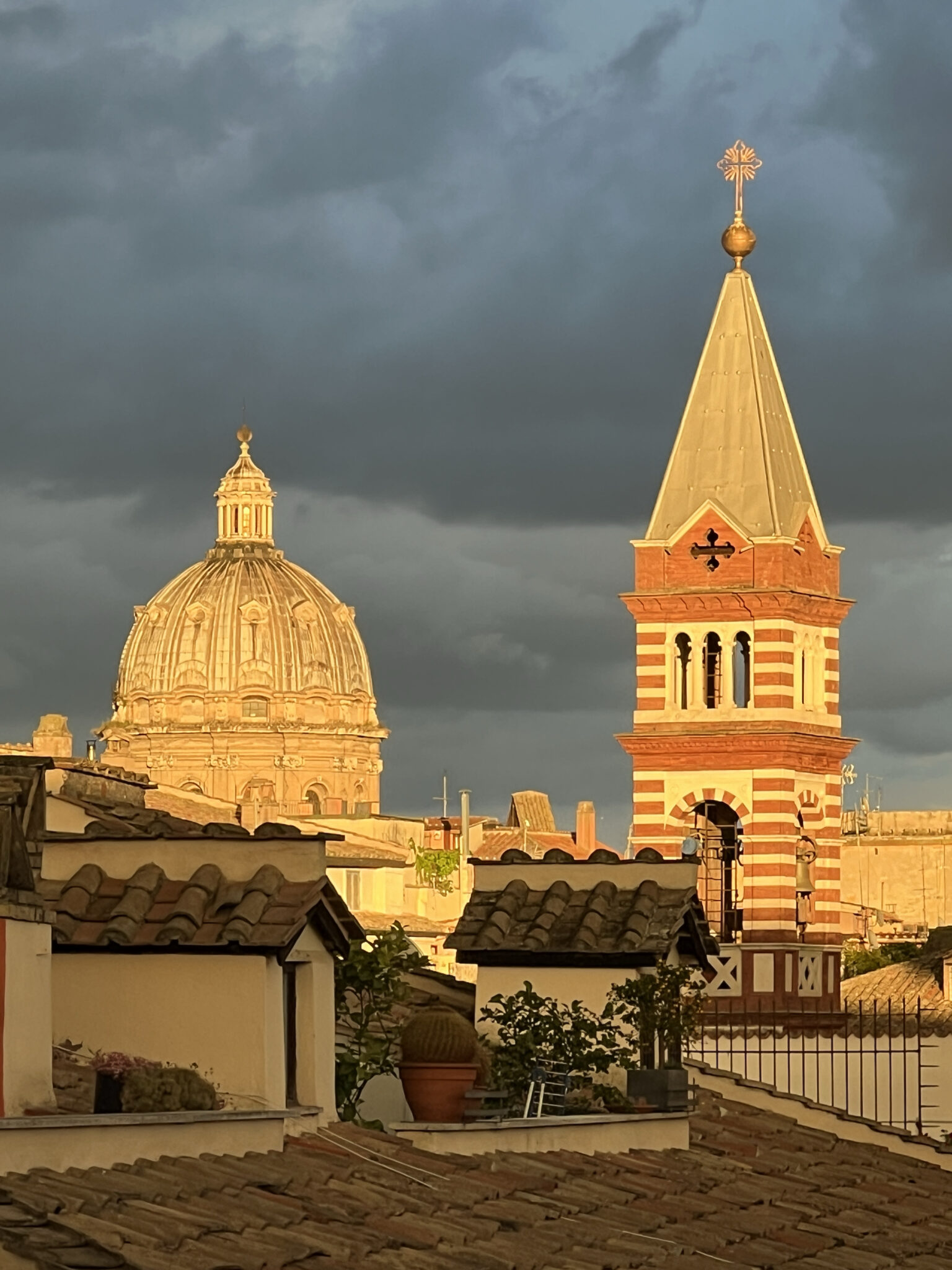
Yesterday, someone asked about a photo: What was in the frames on the vestment case in the sacristy of The Parish™? Here is a shot. These are the prayers that the priest ought to say while putting on his vestments for Mass.
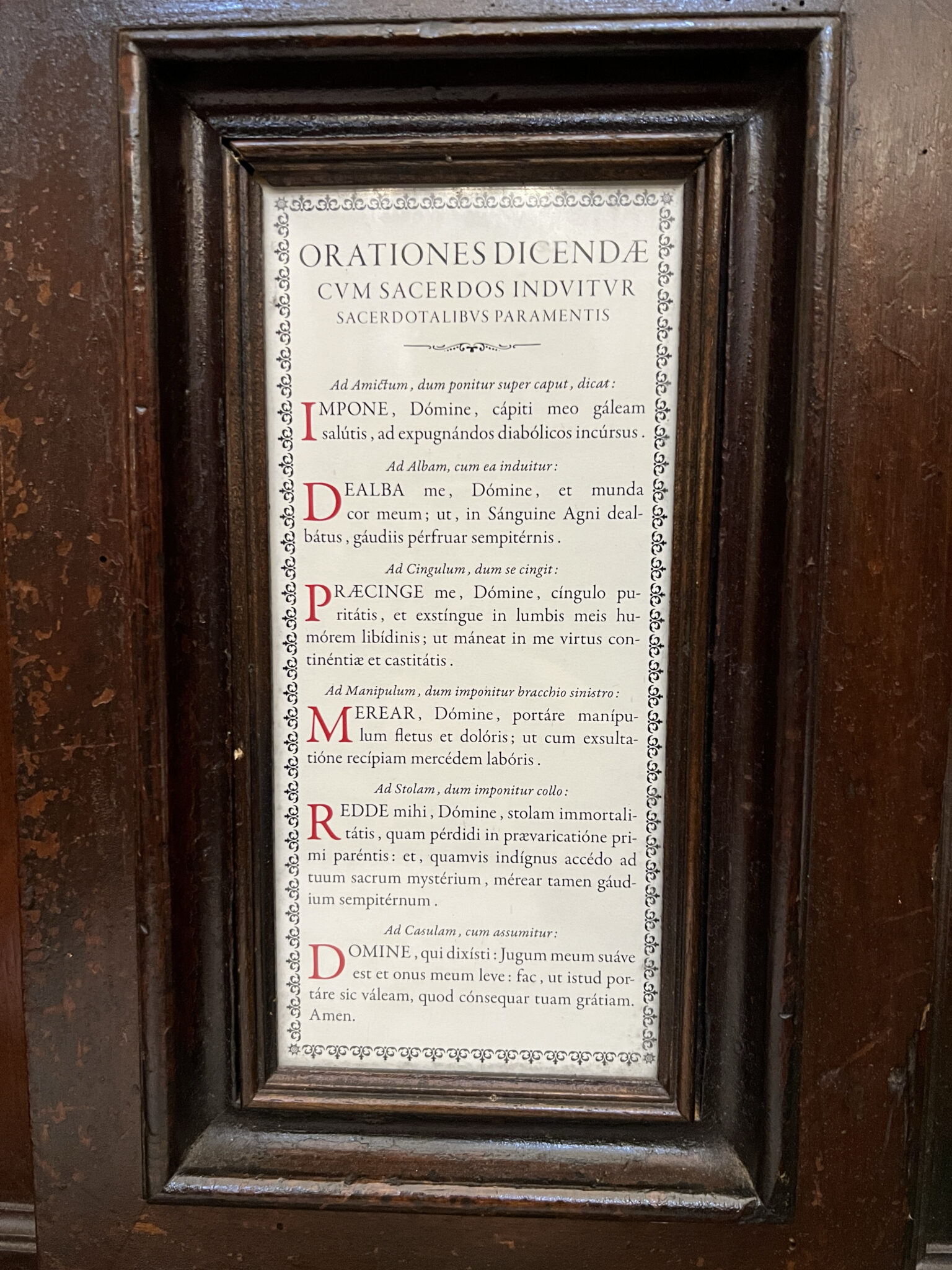
Across the way, on the other side of the sacristy, there is placed the name to be pronounced in the Canon. Underneath is a sign with the prayers for the Subdeacon as he puts on his vestments. There is another for the deacon off to the right.
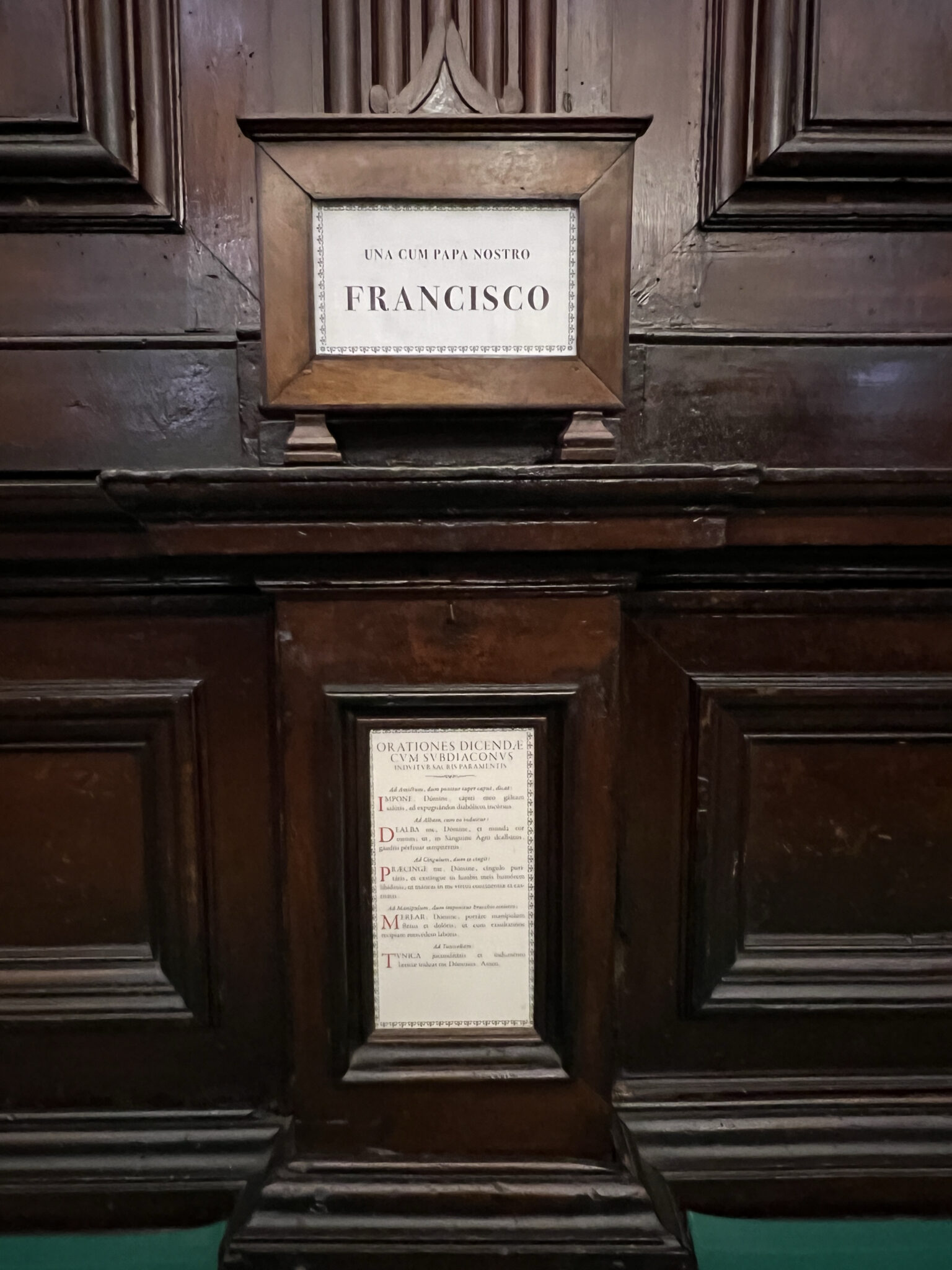
Usually, a well-organized sacristy will always have posted in a visible place near to where the priests vest the names of the Pope and of the local bishop so that a visitor priest knows his name. However, in Rome there is no other local bishop than the Pope. Therefore, when saying the Canon he skips part of the phrase:
…una cum fámulo tuo Papa nostro N.
et Antístite nostro N.et ómnibus orthodóxis, atque cathólicæ et apostólicæ fídei cultóribus.
Another thing you might see in older sacristies is a sign indicating an petition or oration assigned by the bishop or some competent authority. Somewhere in my archive of photos, I have a shot of one of these signs saying “ad petendam pluviam… for praying for rain” and another “pro donum lacrimarum… for the gift of tears”. That second one was replaced in new Missals by “ad petendam compunctionen cordis … for asking for compunction of heart”. I wrote about that votive Mass HERE. A funny thing about the prayers for rain. Soon after that was put up, there was a terrific downpour that partly flooded the sacristy!
Last night I was determined to make some pasta all’amatriciana. I had some guanciale in the fridge and some very good prepared tomato sauce from the local organic store. Better would have been tomatoes, peeled and seeded and chopped up. However, the particular jarred sauce I had on hand was excellent. I’ve used it before.
The website of the City of Amatrice (with their official recipe) says to use a little olive oil. But whadda they know? Some recipes shun the olive oil, relying solely on the liquefying fat from the guanciale. I think it depends on how much you are making and maybe also on the pan. I don’t have well-seasoned cast iron in my rented place. I have to make due with a patchwork of items from IKEA. Improvise – Adapt – Overcome!
NB: For real “all’amatriciana” … no onion! No garlic! Guanciale… tomatoes… pecorino cheese. Permitted are a few drops of wine to deglaze. Because this is so simple, the ingredients must be top notch.
BTW… if you put onion in it, what results can be good, but let’s call it something else.
Working up the guanciale. Since this (cheap) pan has become a bit convex, you can see the fat flowing to the side. There was enough fat that I didn’t need any olive oil.

Adding the tomato. I determined to let it simmer for while to reduce it and concentrate the flavors.
If I had started from whole tomatoes, I would have taken out the guanciale and worked up the tomatoes in the fat.
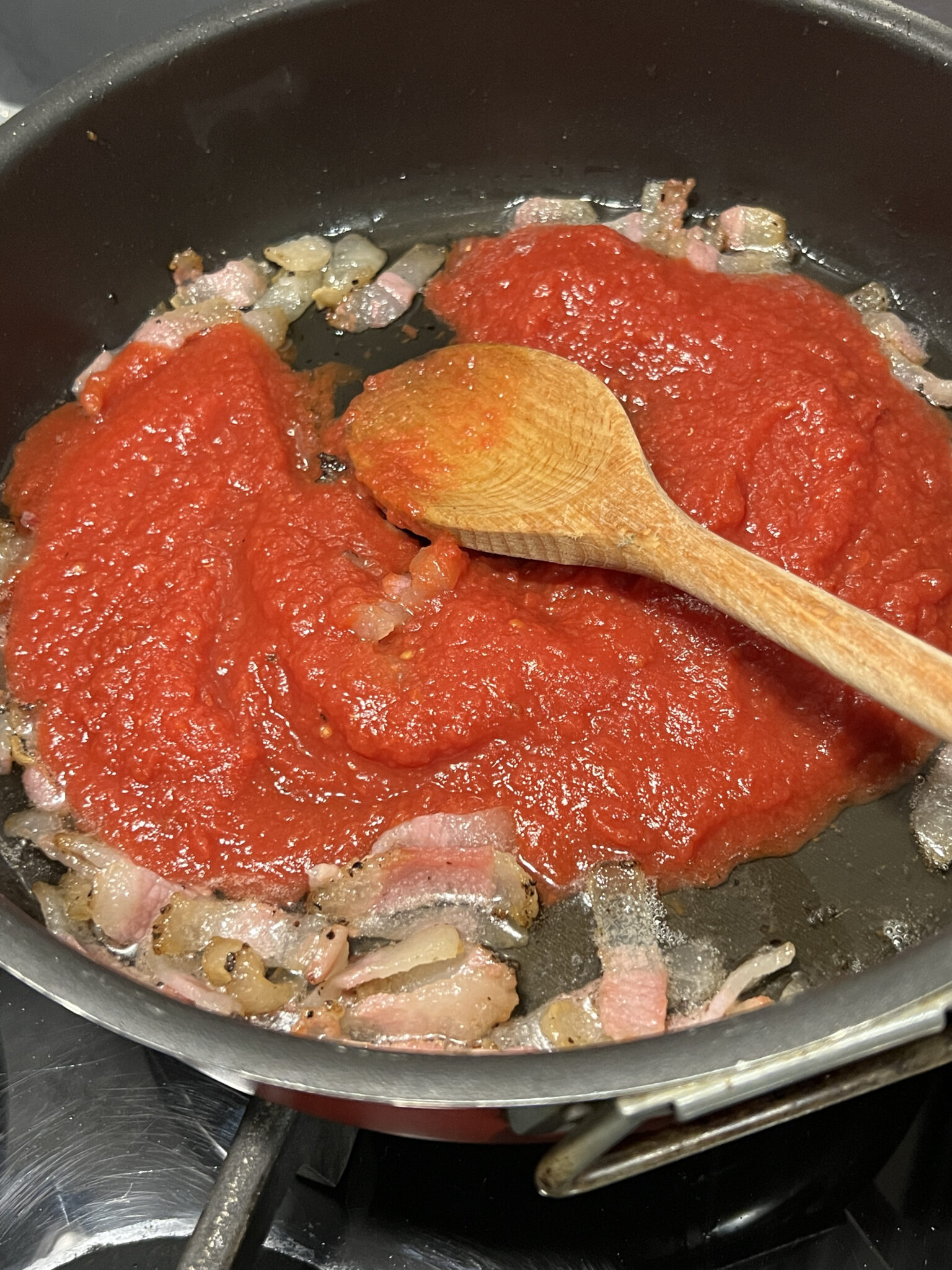
The official recipe doesn’t call for parsley, but – hey – they’re not here, and I like parsley as a finisher.
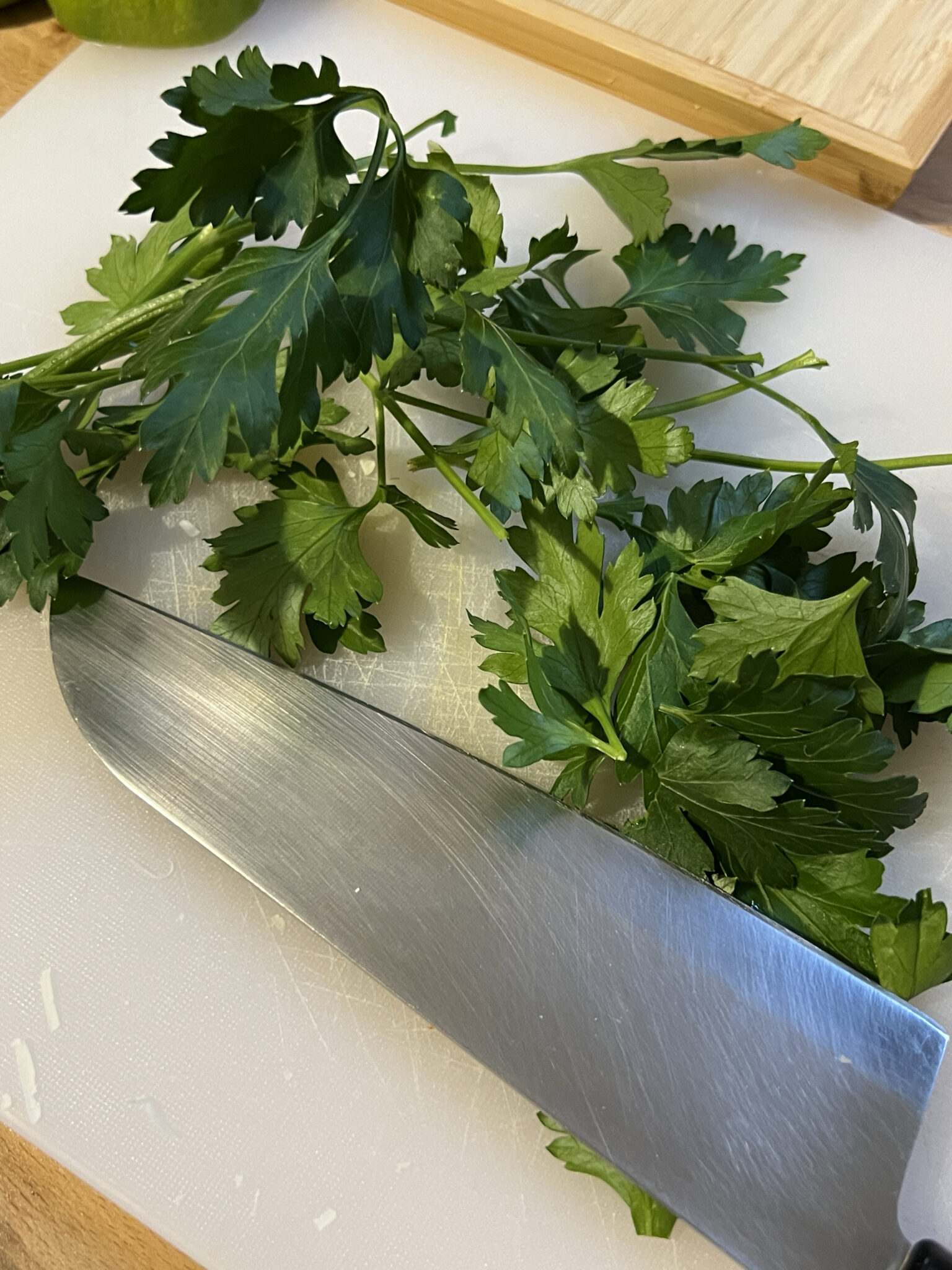
Finish cooking the pasta – bucatini, this time, though spaghetti is proper – in the sauce. Start blending in the freshly grated pecorino. A touch of the pasta water is not forbidden for texture.
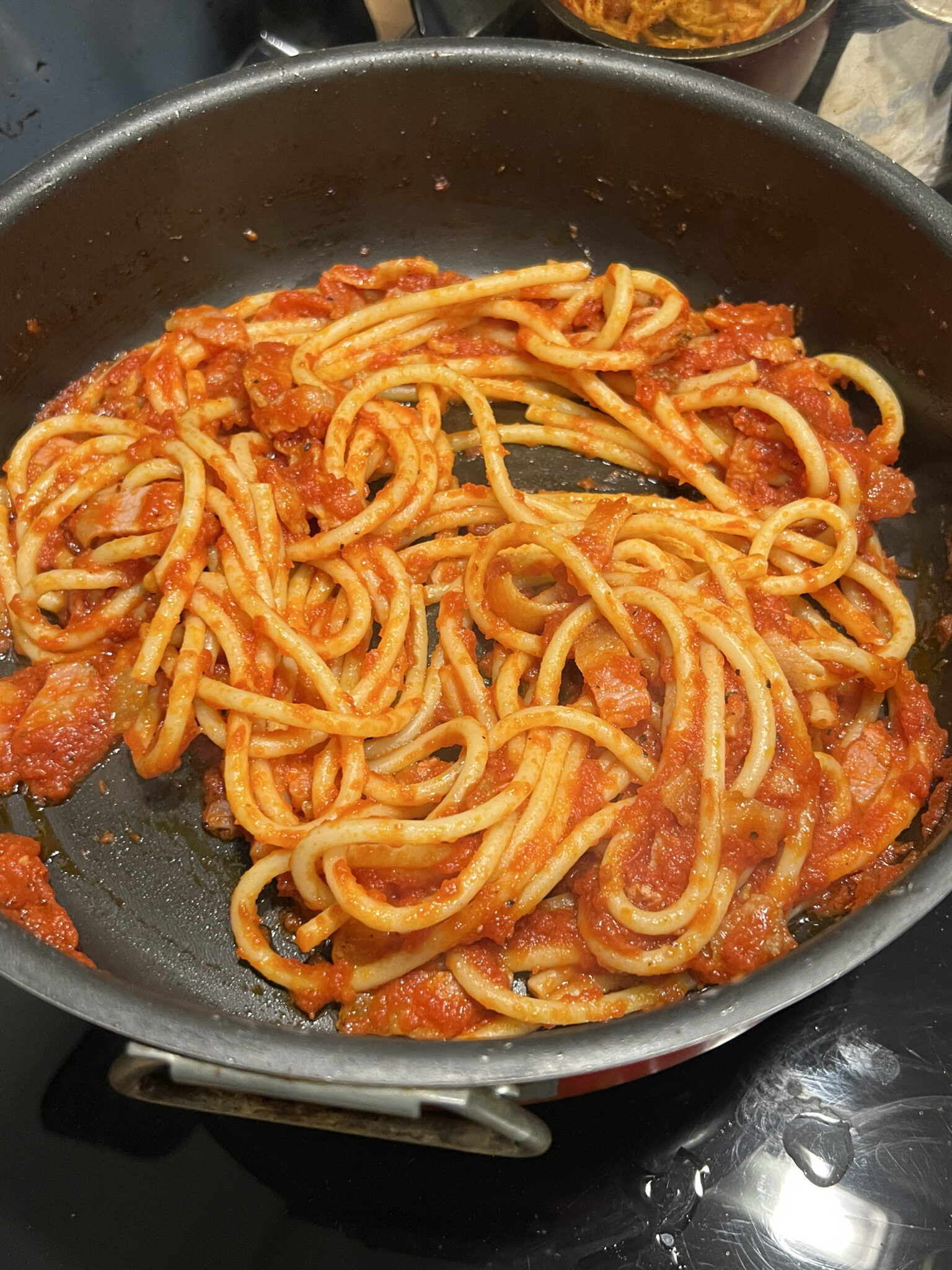
And a little sprinkle of black pepper.
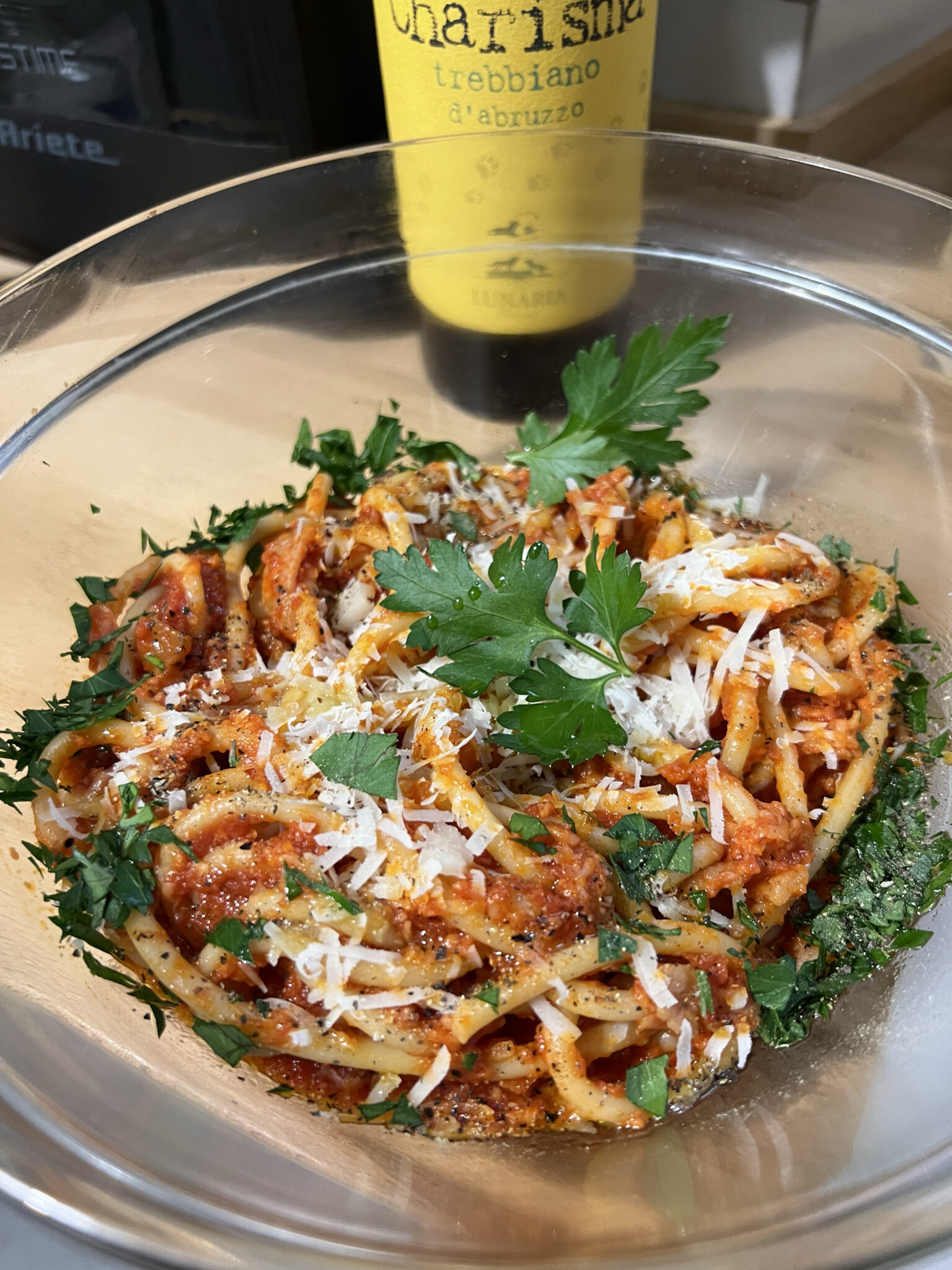
I have often marveled at the truly weird descriptions on menus of some pasta “all’amatriciana”. Frankly, in the USA I try to avoid going to any Italian restaurant. However, when I can’t avoid it, I see horror stories on the menus. What are they thinking? Don’t get me wrong. I am not averse to landing in a humble red sauce place that doesn’t pretend to be something that it isn’t. I can throw that switch in my head and, settling into the “This isn’t really Italian food and they aren’t putting on airs”, I can always find something to enjoy. It’s when they come at you with faux claims of authenticity that I rebel. That goes for any restaurant by the way. I’d rather have a burger at a diner with paper napkins than be subjected to pretentious, often misspelled, over-priced mediocrity.
In chessy news, I read that the BBC will start a new (old) show they once had between 1976 and 1981. The Master Game was a successful program. Viewers could watch grandmasters play in a real tournament while them explain their thoughts and moves.
Meanwhile, give your thoughts on this.
White to move and mate in 4.

NB: I’ll hold comments with solutions ’till the next day so there won’t be “spoilers” for others.
Priestly chess players, drop me a line. HERE
Please remember me when shopping online and use my affiliate links. US HERE – UK HERE WHY? This helps to pay for health insurance (massively hiked for this new year of surprises), utilities, groceries, etc.. At no extra cost, you provide help for which I am grateful.
As I write, I am listening to the recent music release from the wonderful Benedictine nuns of Gower Abbey in Missouri, the Benedictines of Mary, Queen of Apostles.
Here are three tiny tastes. I like that they put the famous Ut queant laxis into the collection. I did a podcast about it back in… HEH!… 2007! I still have traces of youth in my voice.
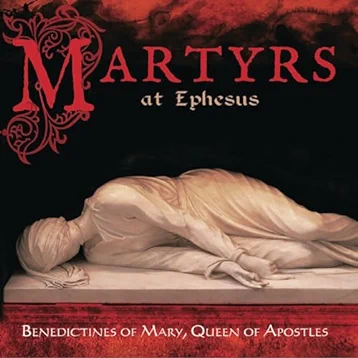
Let’s see if we can sell out all the discs and break the downloads.


































Thanks for the all’amatriciana
Dinner looks exceptional. Newfoundland has great history, you should go. Will be listening to the Sisters.
Love bucatini. My Sicilian Mother made many a great recipe. I have learned to reproduce many of them. In Gloucester MA. , we do a big Feast of St. Joseph.
We make a sauce without tomatoes (a poor man’s sauce). Sauce is made from anise bulb, chopped and puree’d , white beans, cauliflower, short wide flat noodles, St. Joseph rolls. As a child, we would visit the homes that had St. Joseph Altars and say a prayer. we were then given an orange and a St. Joseph roll. A week of Rosaries. When my Mother was a child, if someone received an answer to prayers from St. Joseph, they would pay to have a Passion Play performed for the neighborhood. My Grandfather did this.